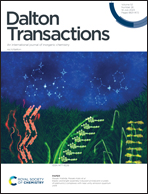Energy storage and water splitting applications of self-grown Na2O–NiCl2 upright standing nanoplates: a process of 3D nickel surface modification using seawater†
Abstract
The recent trend in research fosters the use of abundant seawater for modifying metal surfaces as electrode materials for energy generation, storage, transport, and water-splitting technologies. Economic and ecofriendly seawater is used as a solvent for modifying the surface of 3D nickel-foam (NiF) to Na2O–NiCl2@NiF as an electrode material in electrochemical supercapacitors and water-splitting electrocatalysis applications. The phase of the as-obtained Na2O–NiCl2 is confirmed from the proposed reaction mechanism, followed various physical measurement tests such as X-ray photoelectron spectroscopy and Fourier transform infrared analysis. The formation of Na2O–NiCl2 is caused by a high operation temperature and pressure of seawater solvent, the presence of lone pair electrons on oxygen, and more reactivity of Na for combining with dissolved oxygen than the lone-pair free Cl (towards Ni). In addition to exceptional HER and OER electrocatalytic activities, i.e., 146.3 mV cm−2 and 217 mV cm−2 at a scan rate of 5 mV s−1 to attain the 10 mA cm−2 current density, the Na2O–NiCl2 has demonstrated moderate energy storage ability with considerable durability, i.e., 2533 F g−1 specific capacitance at 3 A g−1 current density even after 2000 redox cycles. The as-assembled Na2O–NiCl2//Na2O–NiCl2 symmetric electrochemical supercapacitor device has ignited a “CNED” panel consisting of nearly forty LEDs with full brightness, offering applied importance in home appliances. In nutshell, seawater-modified metal surfaces can be used for energy storage and water-splitting applications.



 Please wait while we load your content...
Please wait while we load your content...